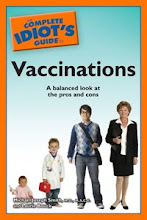Last week, the Institute of Medicine (IOM) released new recommendations for Vitamin D and calcium intake that increase the amount of daily Vitamin D recommended for children and adults. Adequate Vitamin D intake is primarily linked to bone health, making it a vital nutrient as Americans age and diseases such as osteoporosis take hold.
The new IOM report, based on an scientific testimony as well as an analysis of almost 1,000 studies on Vitamin D and calcium, recommends 400 to 600 International Units (IU) of Vitamin D daily for everyone ages 1 through 70, and up to 800 IU daily for those over 70 (here is a chart with their recommendations). This is an increase over earlier recommendations of 200 to 400 IU per day for those 70 and under.
What else has changed in Vitamin D recommendations? The IOM found that most Americans do receive adequate amounts of Vitamin D, even though previous studies have shown that they did not. The IOM report stated that, in the past, inconsistent standards were used in blood tests that measured whether people had adequate Vitamin D in their bodies. As a result, many people studied were falsely labeled as Vitamin D deficient. The IOM considers over 20 nanograms of Vitamin D per milliliter of blood to be a healthy level.
Vitamin D might also help prevent serious health problems such as cancer and heart disease, although the IOM disputes these claims. With disease prevention in mind, though, some people recommend taking many times the recommended amount of Vitamin D daily.
The IOM, however, recommends upper level intake limits for Vitamin D. These limits range from 1,000 to 3,000 IU daily for children up to age 8 (depending on their age) to 4,000 IU daily for older children and adults. At these intake levels, kidney problems and other health issues can occur.
Another study of about 4,500 older women in the Journal of Clinical Endocrinology & Metabolism found that women 69 and older were more likely to be frail if they had either too little (less than 20 nanograms per milliliter) or too much (more than 30 nanograms per milliliter) Vitamin D in their blood. With Vitamin D, it looks like the middle path is best.
Subscribe to:
Post Comments (Atom)




No comments:
Post a Comment